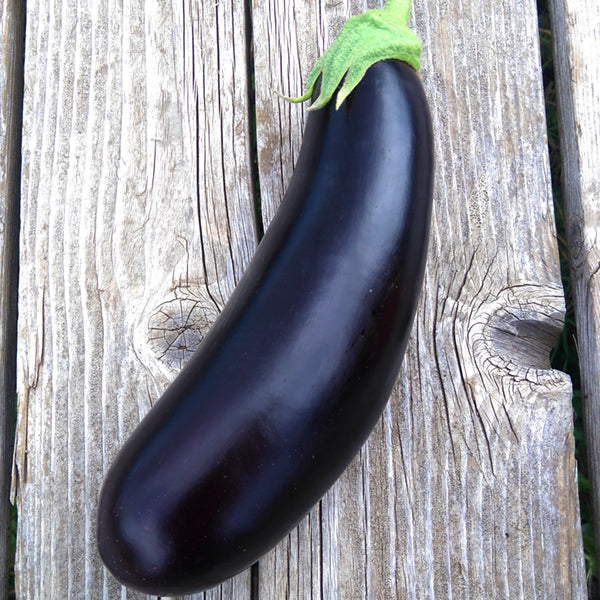My Store
Diamond Eggplant
Diamond Eggplant
Couldn't load pickup availability
MAY BE AVAILABLE SOON. A great variety for short season growing. High yielding plants produce slender, dark purple fruit that are 6-8" long. Sow inside in April, 5mm-1cm deep. Keep seedlings warm, and transplant 45-60cm apart in full sun well past frost date; harden off before transplanting. Eggplants do well in greenhouses or outdoors during a hot summer. Covering outdoor seedlings with a cloche or floating row cover will help them grow. 70 days to maturity.
Certified organic in British Columbia. IOPA # 1606, 1105, 1920.
How to Harvest Eggplant Seeds
Fast Facts
Latin: Solanum melongena
Cross Pollination: Other eggplant varieties
Isolation Distance: 300 feet
Minimum Population Size (variety maintenance): 5-10 plants
Minimum Population Size (genetic preservation): 50 plants
Seeding and Care
Grow eggplant as usual, giving 2 feet of space between plants to ensure that they grow to their full potential.
Seed Maturity
Let your eggplant get very ripe. The skin should begin to turn yellowish with rusty amber in places.
Seed Harvest
Eggplant seeds are wet processed, which makes the process of separating flesh from seed much easier. To process seeds you will need a food processor. Use a dough blade or wrap the blades in scotch tape to be sure you don’t damage the seeds. Cut the eggplant into chunks, as small as necessary for your machine. Place eggplant pieces in the processor and fill to the top with water. Make sure to split up batches so that there is more water than eggplant chunks in each.
As you blend your eggplant, the seeds will detach and sink to the bottom, while the flesh will float to the top. Once your seeds have been separated, pour off the flesh and water and then pour your seeds through a fine strainer before laying on a tray covered with paper to dry. Complete the wet processing as quickly as possible and be sure not to leave the seeds until they are in the drying stage, as seeds left too long in water will be more likely to sprout, which could spoil your batch.


